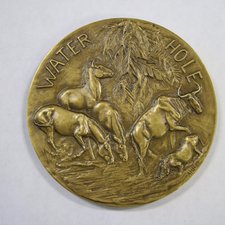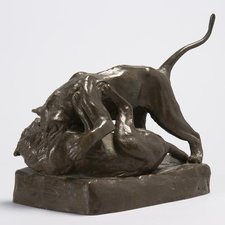Anna Vaughn Hyatt Huntington
1876 - 1973
Anna Vaughn Hyatt Huntington (1876-1973) was born in Cambridge, MA, a daughter of Alpheus Hyatt, a naturalist, and Audella Beebe Hyatt, a watercolorist whose name is found in the circle of women who studied on Cape Ann with William Morris Hunt. The Hyatt’s purchased a summer house in Annisquam in 1878 where Alpheus ran a biological laboratory and school, open to both men and women. While Anna Vaughn Hyatt Huntington would study for a short time under Henry H. Kitson in Boston and later with Hermon A. MacNeil at the Art Students League in New York, she always thought of herself as a self-taught artist, crediting her older sister, Harriet, with sparking her interest in sculpture when she was in her teens.
In 1902, Anna Vaughn Hyatt Huntington moved to New York City to pursue her career as a sculptor—a bold move for a woman at that time—while maintaining a summer studio on her family’s property in Annisquam and strong connections to Cape Ann. In 1907, Huntington traveled to France to continue her work and by the 1910s, had established herself as one of this country’s leading sculptors. In 1916, having already had her work accepted for the 1910 Salon in Paris, she was awarded associate membership in the National Academy and in 1923, full membership. That same year, Anna married Archer Huntington, a wealthy businessman and philanthropist. With her marriage, she gave up her Annisquam studio, turning her attention to the development of Brookgreen Gardens in Murrells Inset, South Carolina.
During the 1930s, Huntington experimented with casting her work in aluminum, a material that came into popularity during that time. Despite her willingness to explore new mediums, however, Huntington remained a traditionalist throughout her life, favoring figurative sculpture as others turned to abstraction.

